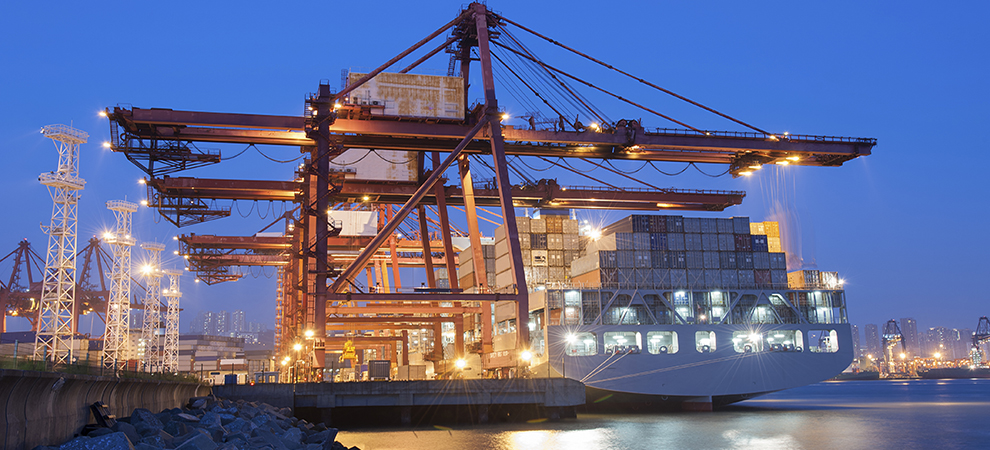The WPJ
THE WORLD PROPERTY JOURNALReal Estate Facts Not Fiction
Commercial Real Estate News

Japan's Logistics Market Grappling with COVID-19 "Aftershock"
Commercial News » Tokyo Edition | By Monsef Rachid | June 17, 2020 8:00 AM ET
According to a new survey by CBRE of companies in Japan that utilize logistics facilities (logistics operators and consignor firms), COVID-19 is still impacting nation's supply chain management's future planning.
Here are the key market insights and findings from the 336 respondents of CBRE's survey, comprising of 242 from logistics operators and 94 from consignor firms:
Here are the key market insights and findings from the 336 respondents of CBRE's survey, comprising of 242 from logistics operators and 94 from consignor firms:
- Regarding plans to establish a new warehouse or to relocate, among the firms responding that they had a plan, 67% of respondents said they would "increase the floor area" while 52% said they would "increase the number of sites". Overall, this indicates that tenants are still eager to expand.
- Regarding the reasons for establishing a new warehouse or relocating, the three most popular answers were "operational efficiency", "increased volume of goods", and "obsolescence/usability". Companies appear to be prioritizing the efficiency and safety of distribution centers, and they are willing to pay a fair price to meet these needs.
- Regarding the allocation and outlook for costs, although cost structures in the logistics industry vary between sectors and types of business, on average, the highest proportion of costs were for transportation/delivery (34%) and labor (29%). In addition, the vast majority of respondents said that both transportation/delivery costs and labor costs would rise over the next three years. These two costs are likely to put pressure on future earnings.
- Regarding the impact of technological advances on warehouse operations over the next three years, 80% of respondents answered that image processing, Automated Guided Vehicles (AGVs), and Internet of Things (IoT) (including RFID tags) were all expected to have a major impact. Furthermore, 78% of respondents said that the use of these technologies would cause the number of warehouse staff to decrease. This suggests that companies expect technology to reduce staff numbers, and therefore lower labor costs.
- In terms of medium- to long-term changes and impact of COVID-19, the most frequent response was "additional inventory" (30%). In the wake of the supply chain disruptions caused by the "corona shock," companies are preparing for unforeseen circumstances in the future. It is clear that many companies think it is inevitable to increase inventory. In addition, the second most common response was "accelerate automation of warehouse work " (17%). There are still many logistics sites where an increase in distribution volume leads to a rise in labor costs. Companies are hoping that automation will improve margins.
Sign Up Free | The WPJ Weekly Newsletter
Relevant real estate news.
Actionable market intelligence.
Right to your inbox every week.
Real Estate Listings Showcase
Related News Stories
Commercial Real Estate Headlines
- 2025 Prediction: U.S. Commercial Investment Recovery Expected to Gain Traction
- Holiday Retail Sales for 2024 to Hit Record $1 Trillion
- Tech, AI Industries Drive Largest Share of Office Leasing Activity in U.S.
- Commercial Real Estate Lending in U.S. Enjoys Strong Growth in Q3
- U.S. Multifamily Market Begins Recovery in Q3
- Commercial Investment in Japan Spikes 24 Percent Annually in Q3
- Despite Return-to-Office Mandates, U.S. Office Vacancies Continue to Rise
- PROPSIG Tech Startup Acquired by World Property Data
- U.S. Commercial Mortgage Debt Hits $4.7 Trillion in Q2 as Delinquencies Increase
- Hong Kong Class A Office Rents Continue to Downtick in Mid-Summer
- U.S. Office Landlords Tenant Concessions Decline for First Time in 4 Years
- U.S. Commercial Mortgage Originations Spike 27 Percent in Q2 Over Q1
- Phnom Penh's Commercial Office, Retail Markets Face Slowdowns in 2024
- Global Edge Data Center Market to Hit $300 Billion by 2026
- Commercial Property Transactions in Japan Dive 25 Percent Annually in Q2
- Delinquency Rates for U.S. Commercial Property Loans Downticks in Q2
- Megawarehouse Lease Deals in U.S. Increase in 2024
- Office Tenants' Flight to Quality Buildings Increases in 2024
- Commercial Lending in Japan Upticks 6 Percent Annually in Q1
- AI Driving Significant Global Data Center Growth in 2024
- Total U.S. Commercial Mortgage Debt Rises to $4.7 Trillion in Q1
- U.S. Commercial Mortgage Delinquencies Rise in Early 2024
- Asia Pacific Office Sector to Further Reprice Throughout 2024
- U.S. Retail Foot Traffic to Surpass Pre-Pandemic Levels by 2025
- Commercial Real Estate Lending in U.S. Slowed in First Quarter
- Japan Commercial Property Investment Volume Jumps 7 Percent in Q1
- Asia Pacific Commercial Property Investment Leads the World, Spikes 13 Percent
- Driven by High Rates, U.S. Commercial Lending Imploded 47 Percent in 2023
- After Two Year Slump, Prime Multifamily Metrics Uptick in U.S.
- Commercial Co-Broker Commissions Not Affected by NAR-DOJ Settlement, Yet
- U.S. Office Buildings with Upscale Tenant Amenities Still Enjoy Premium Rents in 2024
- U.S. Commercial, Multifamily Mortgage Delinquency Rates Uptick in Q4
- U.S. Commercial Mortgage Debt Continued to Rise in 2023, Hits $4.7 Trillion
- Nonresidential Construction Spending in the U.S. Falls Sharply in January
- U.S. Multifamily Construction Starts to Decline in 2024
- Commercial Mortgage Lending in U.S. Shows Signs of Stabilization in Late 2023
- Architecture Billings Decline in December as Soft Business Conditions Persist
- Government Sector Claimed Largest Portion of 100 Biggest U.S. Office Leases Signed in 2023
- U.S. Commercial, Multifamily Borrowing Dives 25 Percent Annually in Late 2023
- Record High Multifamily Construction Deliveries Drive Vacancy Rates Higher
Reader Poll
Marketplace Links
This website uses cookies to improve user experience. By using our website you consent in accordance with our Cookie Policy. Read More





